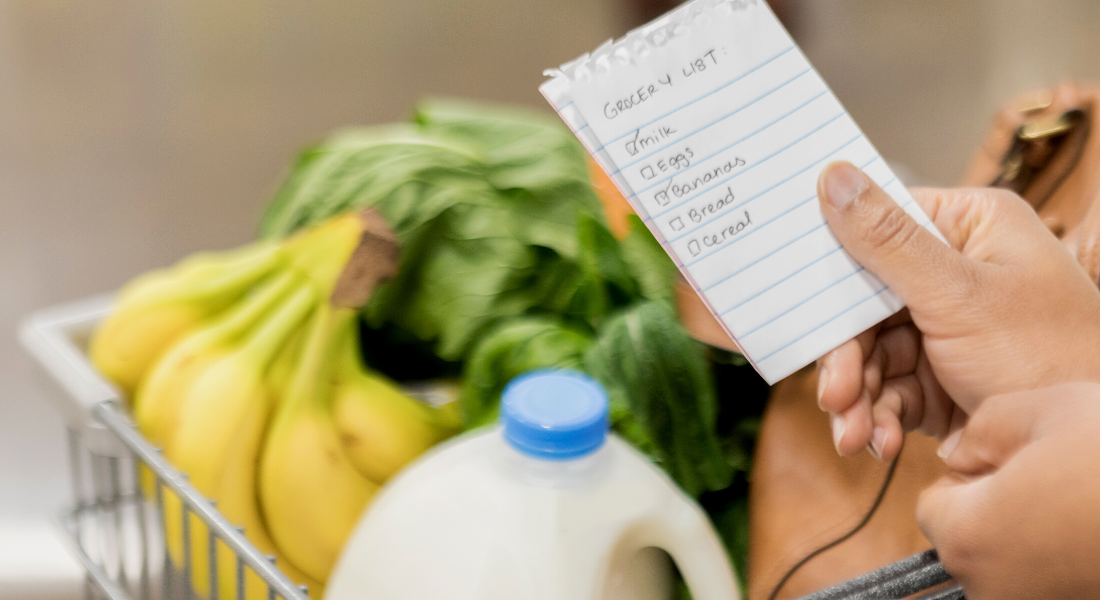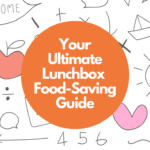7 Helpful Tips to Save Money and Reduce Waste
With inflation on the rise, many Canadians are seeing grocery bills increase with the rising cost of food. We are here to help. Here are seven simple tips to help you stretch your food budget. The good new is, these tips will also help reduce food waste. Now that’s a win, win!
1. Make a Meal Plan and Shop Accordingly
You’ve likely heard this before, but it really works! Simply jotting down a few meal ideas for the week and shopping accordingly saves money. Sticking to a grocery list leads to fewer trips to the grocery store, less impulse buying and less over-buying. As a bonus, it also helps reduce the five o’clock panic of “what’s for dinner”! Read 10 Easy Tips for Meal Planning.

2. Eat Seasonally
Choosing seasonal produce is a budget friendly way to shop all year around. Take advantage of fresh, local berries and garden produce during the summer and dark leafy greens and root vegetables during the winter. Not only does seasonal food offer the best value, but it also tastes great and is ideal for preserving. Keep reading to learn more about freezing, drying and canning fresh produce.
3. Buy Frozen and Canned Fruits and Vegetables
Fresh fruits and vegetables are the most frequently tossed foods in Canadian households. Following our handy A to Z Food Storage Guide can help but buying frozen or canned fruits is another strategy to consider. Commercially frozen produce is frozen as soon as it’s harvested, making it just as nutritious as fresh produce that’s been stored for a while. It’s also easy to use and often goes on sale.
4. Make The Most of Leftovers
Leftovers don’t have to be boring repeats of last night’s dinner. Repurpose ingredients into new creations. Our Food Waste Ambassador, Christine Tizzard has 10 New Ways to Use Up Leftovers. Ideas so good you’ll want to cook extra just so you can have the leftovers! And don’t forget to check our Recipe section for more ways to use up leftovers.
5. Buy Whole Foods
Pre-cut, pre-washed or pre-shredded food in the produce, meat or cheese aisle costs more than the whole version. They’re convenient, but they can cost up to four or five times more and they don’t last as long once you bring them home.
For example, baby-cut peeled carrots last 1-2 weeks in the fridge and cost three times more than whole carrots which can last up to 3 months in the fridge. A pre-washed pack of lettuce costs four times more than a head of lettuce. In the meat department, a fully cooked ham that you can use for dinner or slice for sandwich meat, can save you half the price of pre-packed luncheon meat.
6. Bulk Up Meals with “Filler” Ingredients
Follow a practice used by our grandparents – stretch out precious ingredients with more affordable ones. Filling vegetables like beans, edamame, potatoes, whole grains, lentils, carrots, avocado, sweet potatoes, and winter squash can extend a meal and ensure no one leaves the table hungry. You’ll pay less, add great nutrients and flavour and many of these items are handy to store in your pantry. Our Tomato Butter Bean Soup is a perfect example of how you can boost a simple tomato soup.
7. Buy Big and Save – ONLY IF You Have a Plan
We’ve been conditioned to reach for the best price per unit, so it’s very tempting to buy more and save. But, of course, it’s not a deal if the food ends up getting tossed. To truly take advantage of these savings, have a plan in mind. Consider splitting the items with a friend or neighbour, donate to a food bank, make an extra big batch of food to freeze or preserve it as soon as possible. For example, if you find a good deal on cucumbers, try our Quick and Easy Refrigerator Pickles.
Combine these tips with other money saving strategies like browsing flyers, comparison shopping, clipping coupons and using grocery saving apps to round out your skills as a savvy shopper.

